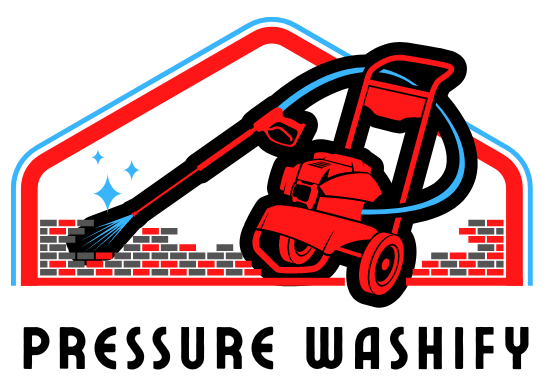Affiliate Disclaimer: This post may contain affiliate links, meaning we get a commission if you decide to make a purchase through our links, at no extra cost to you.
How often do you peek under the hood of your car and examine the engine? If you’re like most car owners, the answer is probably “not often.” We tend to focus our car cleaning efforts on the parts that are visible to ourselves and others. Our focus stays on gleaming wheels, mirror-like windows, and a spotless, shiny outer body. But what about the engine – the heart of your car? It needs care and attention too.
The engine, being the powerhouse of your vehicle, tends to collect a good amount of dirt, grime, and gunk over time. This can lead to decreased performance and ultimately, costly repairs. But you don’t have to let things get to that point. Regular engine cleaning can keep your engine running smoothly and extend its lifespan. And when it comes to cleaning your engine, there are several methods you can consider. But one question seems to surface quite a lot: can I pressure wash my engine?
The Basics of Engine Cleaning

Regularly cleaning your engine is vital for maintaining your vehicle’s performance and lifespan. But why is that, exactly? Over time, dirt, dust, and grime accumulate on engine surfaces and can clog important components. This accumulation may increase the chances of overheating, reduce efficiency, and make it more difficult to detect potential problems, such as oil leaks or worn-out belts. Addressing the issue is crucial, and there are various methods you can use to clean your car’s engine.
- Degreasing – This is the most common method of engine cleaning. With the help of a high-quality engine degreaser, you can easily cut through and remove the grime that builds up on your engine. Simply spray the degreaser on the engine, let it sit for a few minutes, and then rinse it off with water.
- Steam cleaning – If you’d like an eco-friendly option, steam cleaning is your best bet. Using high-pressure steam, this method removes dirt and grime without the need for chemicals. Though it is not as common as degreasing, it can still provide satisfactory results.
- Detailing – For those who prefer a more hands-on approach to engine cleaning, you can opt for detailing. This method involves using a combination of brushes, cloths, and cleansers to meticulously clean every surface of the engine. While it is time-consuming, it allows for a very precise and thorough cleaning process.
- Pressure washing – Now, this is the method that we’re most interested in. Pressure washing entails using high-pressure water to blast off dirt and grime. It’s fast, convenient, and highly effective. But can it be safely used on your car’s engine?
Can You Pressure Wash Your Engine?
The answer is both yes and no. While pressure washing can be an effective means of cleaning your engine, it is crucial to exercise caution while performing this task.
Engines have multiple delicate components that can be damaged if they are exposed to excessive water pressure. These components include sensors, wiring, belts, and the alternator, among others. If damaged, these critical parts may lead to costly repairs, and in the worst case, even engine failure.
However, this shouldn’t completely deter you from using a pressure washer to clean your engine. Pressure washing can be a convenient and efficient method when used cautiously and correctly. In fact, many professionals utilize pressure washers to clean engines, but they do so by adhering to specific guidelines that ensure everything runs smoothly without causing any damage.
The Pros and Cons of Pressure Washing Your Engine
When you’re looking to clean your engine, a few methods are as tempting as pressure washing. With its power and efficiency, pressure washing promises a clean engine in no time. But as with everything, it comes with its own set of pros and cons.
Pros of Pressure Washing Your Engine
1. Efficiency and Speed
Pressure washers can blast away layered grime and dirt quickly and effectively. If you’re dealing with years of neglect and a heavy-duty level of muck, pressure washing can be your engine’s saving grace. Without a doubt, this method is one of the fastest ways to clean an engine.
2. Deep Cleaning
No other cleaning method can penetrate and remove engine gunk as deeply as pressure washing can. The high force of the water can reach nooks and crannies other methods might miss, rendering your engine cleaner than ever.
3. Convenient
Modern pressure washers are handy and user-friendly. You don’t need any professional skills to use these machines. Plus, several models are compact and portable, providing ease of use wherever you need it.

Cons of Pressure Washing Your Engine
1. Potential Damage to Engine Components
The very attribute that makes pressure washing effective can be a double-edged sword. The high pressure can damage delicate engine components like sensors, wiring, etc., leading to costly repairs or replacements in the worst-case scenario.
2. Water Ingress
Excessive or improper use of a pressure washer can lead to water getting into places it shouldn’t, such as the engine’s air intake or electrical system, which could cause significant problems.
3. Not Suitable for All Types of Engines
Not all engines are built the same. Some are more waterproof than others and can handle a pressure wash better. Older engines or those with compromised seals may not fare well with pressure washing.
How to Safely Pressure Wash Your Engine
Getting rid of the grime on your engine using a pressure washer doesn’t mean damage is inevitable. You merely need to follow a step-by-step guide while keeping a few tips and precautions in mind.
Step-by-Step Guide
1. Let the Engine Cool Down:
Never pressure wash a hot engine. Doing so can lead to engine damage as the sudden temperature change can affect engine parts. Let the engine cool down before you start the cleaning process.
2. Protect Sensitive Areas:
Before you start, cover electrical parts, air intake, and other sensitive systems with plastic bags to prevent water from making contact with these components.
3. Apply a Degreaser:
Spray a degreaser on the engine, aiming to cover all sections. Let it sit for a few minutes. This will help the pressure washer in removing stubborn dirt and grease.
Use a well-known brand like the WD-40 Machine and Engine Degrease for great results.
4. Use the Right Pressure Setting:
Avoid the strongest setting on your pressure washer. Using a lower pressure will make the process safer for your engine’s delicate parts.
We recommend using the best pressure washer for car detailing, the Active 2.0 for awesome results.
5. Spray At a Safe Distance:
Don’t rest the jet nozzle too close to the engine surface while spraying. Maintaining a decent distance will ensure the water pressure isn’t too harsh on the engine parts.
6. Rinse Thoroughly:
Ensuring a thorough rinse is crucial to wash away all the loosened grime and to ensure no degreaser residue remains.
7. Dry Thoroughly:
A key step that’s often overlooked is drying the engine properly. You can use an air compressor to dry those hard-to-reach places and ensure no water lingers in any crevices.
Tips and Precautions
While pressure washing your engine can be highly useful, it’s essential to remember these tips and precautions:
- Don’t use a pressure washer on an engine with known issues. If there are existing mechanical problems or the seals are old and not reliable, pressure washing could exacerbate problems.
- Always use appropriate protective gear, like gloves and eye protection, while pressure washing.
- If you are unsure whether pressure washing is suitable for your engine or do not feel comfortable doing it yourself, consider hiring a professional.
Conclusion
Pressure washing can be an efficient and effective method for cleaning your engine when done correctly. By adhering to the step-by-step guide and taking necessary precautions, you can maintain a clean and healthy engine without risking damage to its delicate components. Just remember to always prioritize safety and follow proper procedures for the best results. And, if in doubt, don’t hesitate to consult a professional for advice or assistance.
FAQs
1. How frequently should I pressure wash my engine?
There is no rigid frequency for engine cleaning, as it depends on your individual driving habits and the conditions in which you drive. Generally, once or twice a year should suffice. However, if you often drive on dusty or dirt roads or are experiencing issues that are directly related to a dirty engine, consider pressure washing your engine more frequently.
2. Can a pressure washer cause damage to engine seals, gaskets, or hoses?
If used improperly or with excessive pressure, a pressure washer can cause damage to engine seals, gaskets, or hoses. To avoid inflicting damage, use a lower-pressure setting and maintain a safe distance while spraying. Also, ensure you avoid directing water at events and seals.
3. What type of degreaser should I use when pressure washing my engine?
Choose a degreaser with compatibility with automotive engines, taking into account your engine type and composition. Opt for a water-based biodegradable formula to ensure environmental safety and compliance with local regulations. Always follow the manufacturer’s instructions for dilution and application.
4. How do I protect my engine’s electrical components while pressure washing?
To safeguard your engine’s electrical components, make sure to cover sensitive areas, such as electrical connections, fuse boxes, and sensors, with plastic bags. Use masking tape to secure the bags around the components, so they stay in place while you pressure wash.
5. Can I pressure wash a motorcycle engine?
Yes, you can pressure wash a motorcycle engine as well. However, the precautionary steps become increasingly important due to the exposed design of motorcycle engines. Carefully cover delicate components, electrical connections, and intake areas. Use a low-pressure setting and keep a safe distance while spraying.










